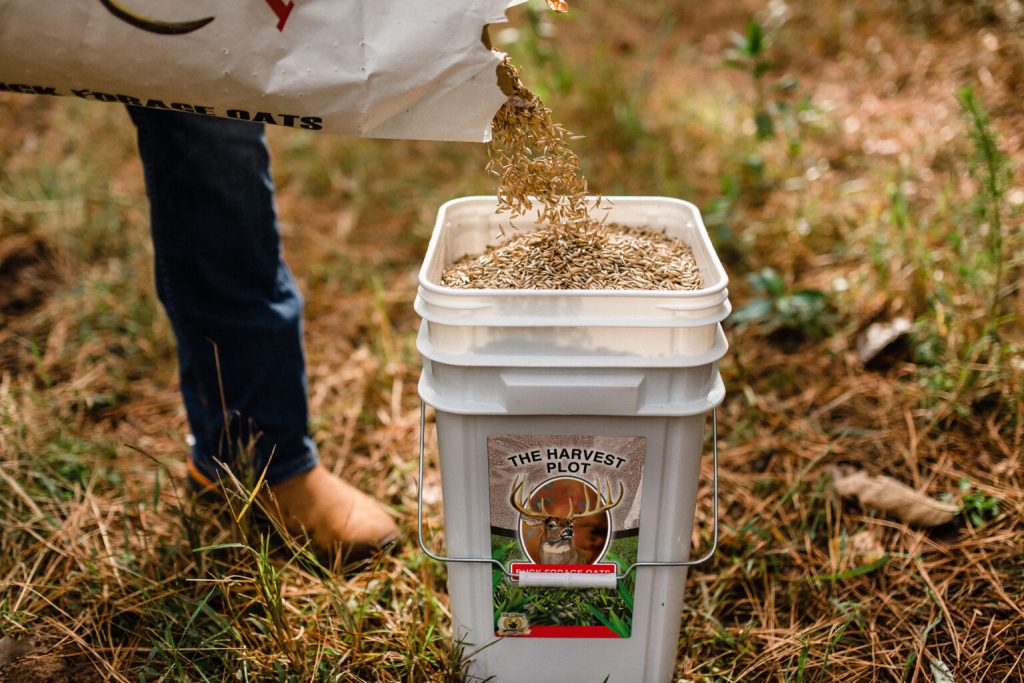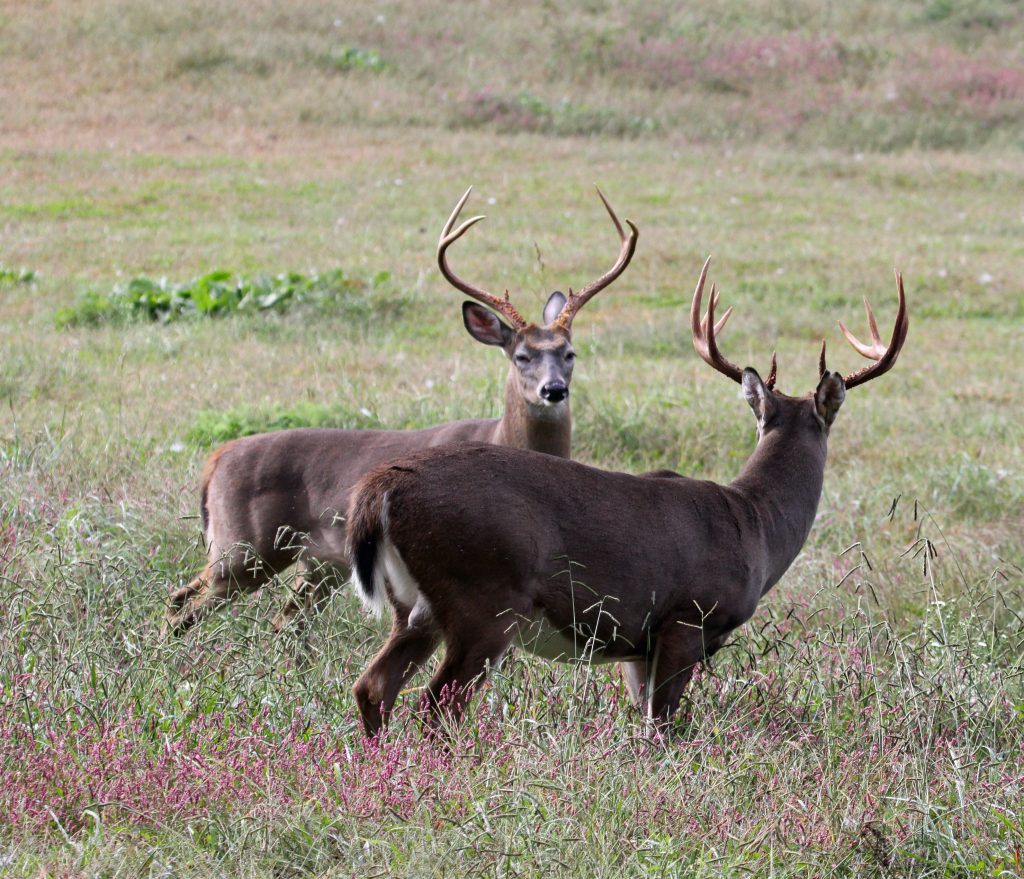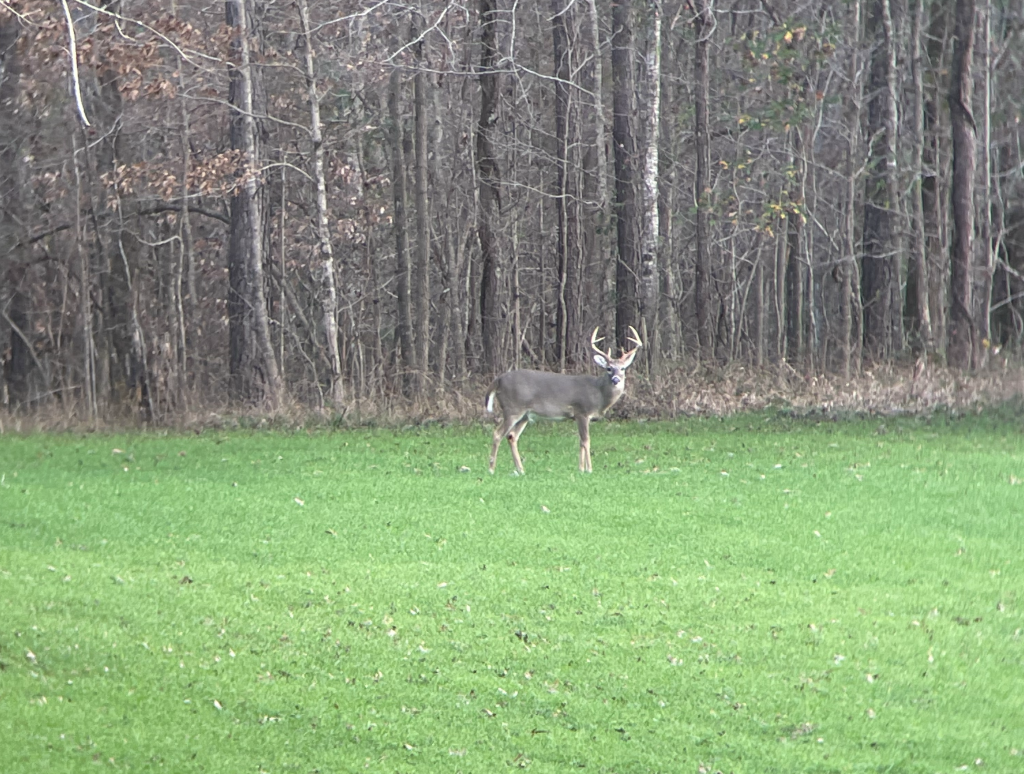Fall food plots are a vital resource for wildlife and a key hunting strategy for whitetail deer hunters around the country. Because of that, it’s also really big business. It seems like every year there are new and exotic seeds touted as the next best thing in deer forage. With so much marketing hype around, this year I wanted to look into the research behind what food plot seed choices I should make for my soils and my climate.
Dr. James Kroll, affectionately known as “Dr. Deer” is the Professor Emeritus of Forest Wildlife Management at Stephen F. Austin State University. For more than four decades, he has been studying food plot seeds at The Institute for Whitetail Deer Management and Research and in that time he has seen what works consistently for fall food plots across the whitetail’s range. In this article, we’re going to look at fall food plot seed choices that you can make from a deer’s point of view. We’ll learn what they prefer from a palatability standpoint and how these seeds can be chosen based on your location. We’ll dive into the ideal planting times and also look at some seeds that deer actually prefer the least. Before you put seeds to soil this year consider these points in your fall food plot seed mixes.
Best Seeds For Deer Food Plots By Deer Preference
“You cannot name a plant that we have not tested, and tested geographically.” Dr. Kroll said in a recent interview on the Huntin’ Land Podcast. “Here’s what we did when we first put together the institute, we put together focus groups. We brought in landowners, hunters, foresters, and wildlife biologists, sat them down, and said, “We’re setting up a 20-year plan for research. What do you need to know?” One of the first things they said was, “Can you plant something for deer?” So I said okay, who knows more about forages for ruminants than anybody on the face of the earth? If dairymen don’t know about it, it isn’t there. So we went and asked the dairyman, “What do you plant?””
“The answer was quite simple. They said, “We plant a mixture of cereal grains and legumes, and the legumes are clovers.” So from these recommendations, the early research Dr. Kroll initiated was focused on cereal grains and legumes. “Let me tell you something that was 40-something years ago and the answer is still cereal grains and legumes for cool season plantings.” Dr. Kroll said. So that begs the question, which cereal grains and legumes are most preferred? Let’s look at the research. “Mississippi State did a preference study and there’s only the following plants that actually work. cereal grains: and the ratings on cereal grains are oats first, wheat second, cereal rye third, triticale fourth, and rye grass fifth in deer preference. The other one is red and white clovers and which one you choose depends on site and soil types. And that’s pretty much it.”
Oats For Deer Food Plots
With oats being the top choice food for whitetail deer, it seems natural to make them a staple of most food plot seed mixes. But the problem with oats is their cold tolerance, Dr. Kroll says.
“From our early research, I was dead set against planting oats because they just weren’t cold-tolerant. So, we pretty much went with wheat and rye in those days for cold tolerance. And then one day, this guy named John Butler called me from Stuttgart, Arkansas, and said, “I hear you are doing all this research and I hear you really don’t like oats.” And I said, “Well, I like oats. But they freeze out.” And he said, “Well, I accidentally found one that doesn’t freeze out. And what I would like to do is I’d like to send you some seeds. And if you do your testing I won’t bother you for a year and we’ll talk about it.” So we planted it in our evaluation plots, and that winter, lo and behold, it got down to like 8 degrees. And they didn’t freeze out.”

Winter Oats For Deer
That was almost 40 years ago according to Dr. Kroll, and since then a mountain of testing has been done with this cold-tolerant variety. “I’ve worked very closely with Dr. Steve Harrison at LSU. For all these years, Each year we look at about 14,000 test plots of crosses that Dr. Harrison does the breeding of oats. We’ve ended up with a variety of Louisiana 9917’s that have won every cold tolerance, grain production, grazing field trials in the world.”
This variety of winter oats for deer is now known as Buck Forage Oats and after 40 years of cross-breeding and testing, today’s variety is better than ever.
According to Dr. Kroll, “Instead of coming up with new plants, what we did is we took the plants that were already working and made them better. In the 40 years that we have developed and released, this will be only the fourth variety we’ve released.”
When To Plant Oats For Deer
There is a lot of information on the internet about food plot planting, but the issue with a lot of information available is that it is written by a person using their limited experiences, in their particular climate. The answer to, “When to plant oats for deer?” is going to be different if you are in the coastal plain of Alabama vs. the central plain of Illinois. Depending on your climate, oats are typically planted sometime between late summer and early Fall. A good rule of thumb is to attempt to plant 6-8 weeks before your location’s first frost date and when you see at least a ½” of rain in the forecast.
Winter Wheat For Deer
Winter wheat offers several benefits for deer, and it’s relatively easy to grow. It’s a good source of protein, and the green forage it offers during late fall and early winter is beneficial for deer trying to maintain body weight during colder months. Winter wheat is highly digestible compared to some other grains, making it a preferred food source for deer. As mentioned previously by Dr. Kroll, winter wheat tends to be very palatable to deer, second only to oats. Besides its benefits to wildlife, winter wheat also plays a role in controlling soil erosion during the winter months. This helps in maintaining a healthy plot for successive plantings. Winter wheat also establishes quickly, providing ground cover which can suppress weeds and undesirable plants. One significant advantage of winter wheat is that it can be mixed with other food plot species. For instance, many people mix it with clover and oats to provide a more diverse food source.
When To Plant Winter Wheat For Deer
Planting time can vary based on your geographical location, but winter wheat is typically planted in the fall. This allows the wheat to establish before winter, go dormant during the coldest months, and then begin growing again as soon as temperatures rise in the spring. The best time to plant is generally 4-6 weeks before the first hard frost. This gives the wheat ample time to establish a good root system. While it’s best to get winter wheat in the ground by the recommended time frame, it’s forgiving of late plantings. Even if you plant closer to the first frost, it can still provide a beneficial food source for deer. However, its growth and overall yield might be reduced compared to optimal planting times.
Cereal Rye For Deer
Cereal rye, also known as winter rye, is another grain that is popular in food plots for deer and as a cover crop in agricultural settings. It offers a range of benefits for both deer and the soil. Cereal rye provides green forage that is particularly valuable during the late fall, winter, and early spring when other food sources may be scarce. While cereal rye might not be as high in protein as some other food plot species, it’s still a good source of nutrition for deer, especially during the colder months when green forage is limited. Deer find young rye plants to be quite palatable, third to oats and winter wheat and they will actively seek out and graze on rye plots during the fall and spring.
Rye’s rapid germination and growth help stabilize soil and prevent erosion, especially during the winter months. Cereal rye can effectively outcompete many weed species. This characteristic makes it valuable in both food plots and larger agricultural settings where weed control is a concern. The deep and fibrous root system of rye helps improve soil structure by creating channels in the soil. This can enhance water infiltration and reduce compaction. Once rye dies back, it contributes organic matter to the soil, which can enhance soil fertility and improve its overall health.
When To Plant Winter Rye For Deer
Like winter wheat, cereal rye is typically planted in the fall. It has a very robust nature and can germinate in cooler temperatures, making it ideal for late-season plantings. It’s best to plant cereal rye about 4-6 weeks before the first hard frost, similar to winter wheat. One of the advantages of cereal rye is its adaptability. It can be planted later in the season than many other grains. In fact, it’s one of the last crops you can plant and still expect reasonable germination and growth. In more southern areas, planting can extend into late October or even November, especially if it’s being used primarily as a cover crop. When considering cereal rye for a food plot or cover crop, it’s also good to be aware of potential downsides. For example, if allowed to go to seed, rye can become somewhat invasive in certain settings. Proper management practices, such as timely termination of the crop can mitigate this concern.
Clover Seed For Deer
Both red and white clovers are favored for their palatability and nutritional benefits for deer and other wildlife. Clover is rich in protein, which is beneficial for antler growth and overall deer health. The protein content can often range between 20-30%, depending on soil fertility and the clover variety. Clover is easily digestible, which means deer can extract more of its nutritional content compared to other forages. Deer love clover, and both red and white varieties are highly palatable, making them a favorite food choice throughout the growing season. Clovers are perennials, so once established, they can provide food for multiple years, reducing the need for annual replanting.

Clover doesn’t just benefit deer, it’s also an excellent soil builder. One of the primary benefits of clovers and legumes in general is their ability to fix nitrogen from the atmosphere. This means they can essentially fertilize the soil by adding nitrogen, an essential nutrient for plants. The dense root system of clover can help improve soil structure and reduce erosion. Once established, clover can create a dense mat, which can suppress weeds and reduce the need for herbicides. Clover flowers attract bees and other pollinators, which can be beneficial for the local ecosystem and turkeys will love feeding on those insects during the brooding season.
Red Or White Clover For Deer
Red clovers tend to be more robust than white clovers. They typically grow taller and are more drought-resistant. They are better suited for well-drained soils and often have a slightly higher protein content than some white clovers. White clovers tend to stay shorter and spread out, creating a dense ground cover. They can handle wetter soil conditions better than red clover. It’s generally more tolerant of heavy grazing, making it a favorite for heavily used plots and/or high deer densities. When choosing between red and white clover, consider the soil conditions and the expected grazing pressure and consider some of the improved varieties.
In our conversation about clovers, Dr. Kroll had this to say about white clover varieties. “The advances in the white clovers are way beyond what they were when we started. White clover has a little tiny leaf and has a lot of tannin in it. Now we’ve got these big leafed, Ladino and Regal varieties. The one that Buck Forage sells is a really neat variety that was built in Scandinavia that won all the international trials. They [improved varieties] all have big leaves, which means they have less tannin.”
Best Time To Plant Clover For Deer
Spring is the most common time to plant clover. Depending on your location, this can be anywhere from early to late spring, once the danger of extreme frosts has passed. In some areas, clover can also be planted in early fall, giving it enough time to establish before winter. Ensure you plant early enough in the fall so that the clover can develop a good root system before cold temperatures set in. Before planting, it’s wise to conduct a soil test. Clover prefers a pH between 6.0 and 7.0. Lime or other soil amendments may be needed based on the test results to ensure optimal clover growth. Remember, while clover is relatively low-maintenance once established, it can benefit from periodic mowing to control weeds and encourage new growth. Additionally, while clover can fix nitrogen, it might still benefit from periodic fertilization with phosphorus and potassium to ensure robust growth.
Brassica Food Plot Seed
I wanted to know more about brassicas as a fall food plot planting. Dr. Kroll shared his thoughts, “Early on, I got very critical about the brassicas and when I started criticizing brassicas, the social media just blew up. I did not know my parents weren’t married!” he laughed. “I kept saying we’ve done the research and not only that, in Europe, they regulate how many acres you can plant to brassicas because they’re toxic and they kill roe deer and red deer and hares. The problem with brassicas is that they’re high sulfur compound plants. The media was hilarious, they said those alkaloids would turn into sugars. I have a degree in chemistry and I’m here to tell you there ain’t no process where alkaloids are turned into sugars. They give deer hemolytic anemia and diarrhea if they eat too much of them. This went on for a long time and I was called every name in the world. Well guess what? Now all of the science is in, and again, Mississippi State did a preference study and the brassicas were the last choice preference, only above ryegrass.”
Final Thoughts On Food Plot Seeds
Fall food plots have always been a part of my hunting strategy. I love the tradition of those late summer and early fall weekends preparing a property for hunting season. The work you put in builds excitement for the season ahead and adds to the sense of satisfaction you feel from putting meat on the table and providing a year round source of food and cover for wildlife. That being said, picking food plot seed doesn’t have to be complicated. What was working decades ago, still works now. Focus on highly palatable cereal grains and legumes chosen for your food plot site conditions and enjoy the reward of your hard work this fall.




